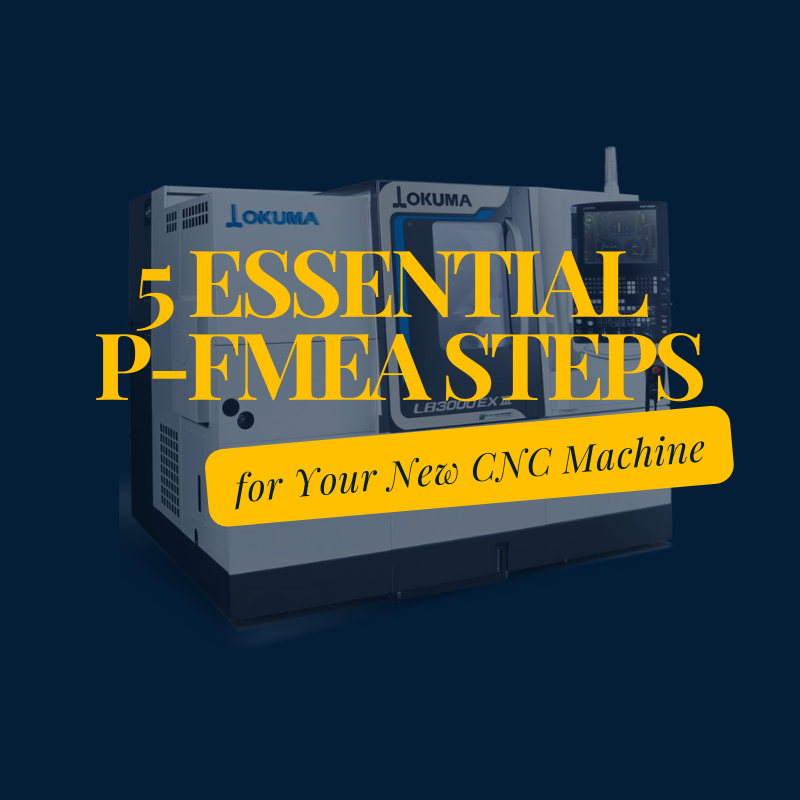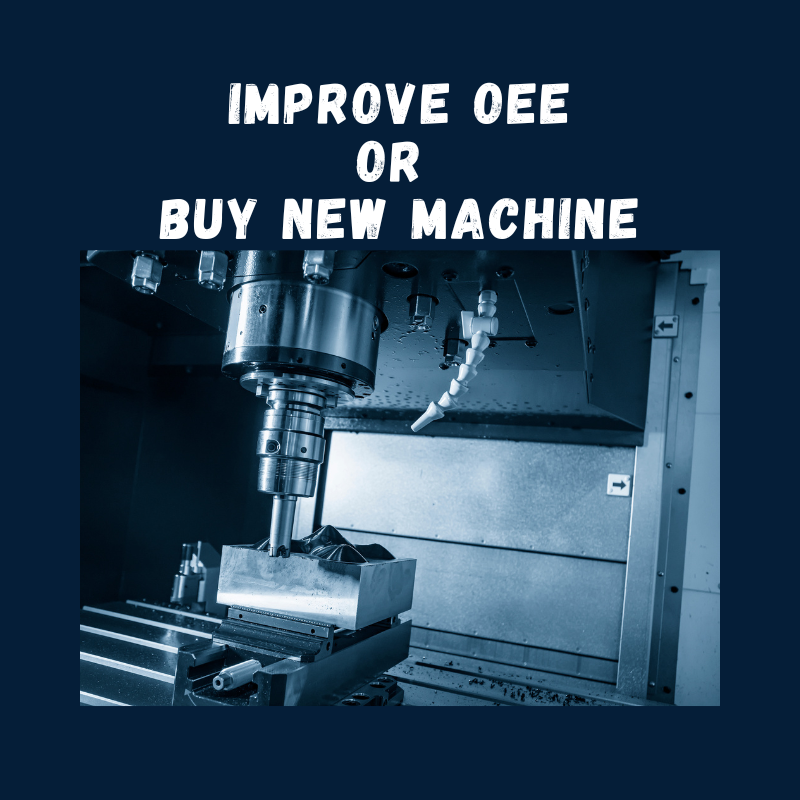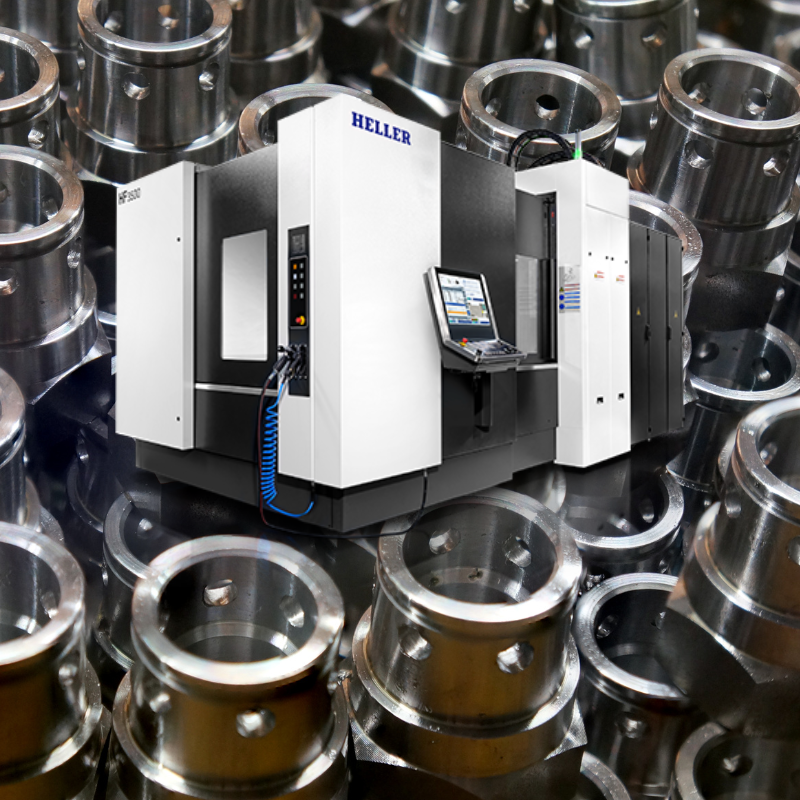Implementing Process Failure Mode and Effects Analysis (P-FMEA) is important for ensuring the reliability and efficiency of your new CNC machine. In this article we will guide you through each step, ensuring your CNC machine operates at peak performance.
P-FMEA for CNC machines involves identifying potential failure modes, assessing their effects, prioritizing risks, and implementing corrective actions. It includes defining the scope, assembling a team, identifying potential failures, evaluating their impacts, and taking measures to mitigate risks.
Understanding how to effectively implement P-FMEA can save you time, money, and potential headaches. Dive into this guide to learn the detailed steps and best practices for a successful P-FMEA process.
Step 1. Assembling Your P-FMEA Team
Assembling the right team is the first serious step in implementing P-FMEA for your CNC machine. A well-disciplined team ensures diverse viewpoints and comprehensive analysis.
When assembling a P-FMEA team, include members with varied expertise such as manufacturing engineers, machine operators, quality control specialists and maintenance personnel. This diversity ensures that all potential failure modes are considered from different angles. Begin by appointing a team leader who will coordinate meetings, document findings, and ensure the process stays on track.
A well-rounded team brings different viewpoints to the table. manufacturing engineers can provide insights into potential design-related and mechanical failures, while machine operators can identify issues that might arise during production. Quality control specialists focus on ensuring the final product meets standards, and maintenance personnel can highlight long-term reliability concerns.
Effective communication and collaboration are key. Regular meetings should be scheduled to discuss findings, update the risk assessment, and ensure everyone is on the same page. Utilize tools like fishbone diagrams or flowcharts to visualize potential failure modes and their effects.
Step 2. Identifying Potential Failure Modes
Identifying potential failure modes is the basis of P-FMEA. This step involves brainstorming all possible ways the CNC machine could fail.
Start by examining every component and process related to the CNC machine. Consider both hardware and software aspects. For example, hardware failures might include spindle malfunctions, motor failures, or structural weaknesses. Software failures could involve control system bugs or programming errors.
Use a structured approach such as the 5 Whys or cause-and-effect diagrams to dig deeper into each potential failure mode. The goal is to identify not just the obvious failures but also the less apparent ones that could have significant impacts.
Document each failure mode in a worksheet, noting the component, potential failure, and its effects on the machine's operation. This systematic documentation helps in the next steps of the P-FMEA process.
Step 3. Evaluating the Effects of Failures
Once potential failure modes are identified, the next step is to evaluate their effects. This involves assessing the severity, occurrence, and detectability of each failure mode.
Evaluate the severity of each failure mode by considering its impact on the machine's performance and the overall production process. Assign a severity rating on a scale from 1 to 10, with 10 being the most severe. Next, assess the likelihood of occurrence by examining historical data, industry benchmarks, and expert opinions. Rate the occurrence on a similar scale.
Finally, evaluate the detectability of each failure mode. How likely is it that the failure will be detected before it causes significant issues? Again, use a scale from 1 to 10, with 10 being the least detectable.
Combine these ratings to calculate the Risk Priority Number (RPN) for each failure mode. The RPN helps prioritize which failure modes require immediate attention and corrective actions.
Step 4. Implementing Corrective Actions
After prioritizing the failure modes, the next step is to implement corrective actions to mitigate the identified risks.
Corrective actions can range from design modifications, process changes, to enhanced maintenance schedules. For high-risk failure modes, consider redesigning components or adding redundancies. Process changes might involve improving quality control measures or enhancing operator training.
Document each corrective action, assign responsibility, and set deadlines for implementation. Regularly review the effectiveness of these actions and update the P-FMEA as necessary. This continuous improvement loop ensures that the CNC machine remains reliable and efficient over time.
Step 5. Monitoring and Updating the P-FMEA
P-FMEA is not a one-time activity. Continuous monitoring and periodic updates are essential to adapt to new information and changes in the production environment.
Establish a routine review process where the team reassesses the P-FMEA at regular intervals or after significant changes to the CNC machine or production process. This could be quarterly or after a major modification.
During these reviews, evaluate the effectiveness of previously implemented corrective actions. Adjust the risk ratings as necessary based on new data or insights. This ongoing process ensures that the P-FMEA remains relevant and continues to provide value.
Implementing P-FMEA for your CNC machine is a comprehensive process that involves team collaboration, systematic identification of potential failures, thorough evaluation of their effects, and proactive corrective actions. By following these 5 steps, you can enhance the reliability and efficiency of your CNC machine, ensuring smooth and uninterrupted production.
Examples of P-FMEA Done on a New CNC Machine
Case Study 1: Spindle Motor Overheating
In planning for a new CNC machine, a manufacturing company conducted a P-FMEA to anticipate potential issues. The team, comprising machine operators, manufacturing engineers, and maintenance personnel, identified spindle motor overheating as a potential high-risk issue due to its impact on production and maintenance costs.
Potential Failure Mode: Spindle Motor Overheating
Effects: Machine downtime, increased maintenance costs, potential damage to other components
Severity Rating: 9
Occurrence Rating: 6
Detectability Rating: 4
RPN: 216
Preventive Actions
To mitigate the risk of spindle motor overheating, the team decided on several preventive measures. First, they recommended enhancing the design to improve ventilation and cooling systems around the spindle motor. This would help dissipate heat more efficiently and maintain optimal operating temperatures. Additionally, installing thermal sensors to monitor the spindle motor's heat in real-time would provide early warnings of potential overheating, allowing for prompt intervention. Lastly, the team proposed developing detailed usage guidelines to prevent extended periods of operation without adequate cooling. These guidelines would include scheduled cooling-off periods and operator training to ensure adherence to best practices.
Case Study 2: Control System Bugs
In evaluating a new CNC machine purchase, a precision engineering firm performed a P-FMEA and identified control system bugs as a potential failure mode. This issue could lead to inaccurate machining and production delays.
Potential Failure Mode: Control System Bugs
Effects: Inaccurate machining, production delays, rework costs
Severity Rating: 8
Occurrence Rating: 5
Detectability Rating: 6
RPN: 240
Preventive Actions
To address the risk of control system bugs, the team recommended several preventive actions. First, implementing a rigorous software testing protocol before the machine's deployment would help identify and fix bugs early. This protocol would include simulation testing and real-world scenarios to ensure robust performance. Additionally, providing comprehensive training for operators on recognizing and troubleshooting software issues would empower them to handle unexpected problems effectively. Moreover, installing backup control systems would allow for a quick switch in case of primary system failures, minimizing downtime and maintaining production accuracy.
Case Study 3: Tool Wear and Breakage
Before purchasing a new CNC machine, a company conducted a P-FMEA and identified rapid tool wear and breakage as potential issues. These could lead to poor quality output and increased tool replacement costs.
Potential Failure Mode: Tool Wear and Breakage
Effects: Poor quality output, increased tool replacement costs, production downtime
Severity Rating: 7
Occurrence Rating: 6
Detectability Rating: 5
RPN: 210
Preventive Actions
To mitigate the risk of rapid tool wear and breakage, the team proposed several preventive actions. They recommended selecting high-quality, durable tool materials specifically designed for the machining tasks at hand. This would enhance tool longevity and reduce the frequency of replacements. Additionally, establishing optimal cutting speeds and feeds would minimize stress on the tools, further preventing wear and breakage. Implementing real-time tool condition monitoring systems would also be beneficial, as they could predict and prevent tool failures by alerting operators to potential issues before they escalate.
Case Study 4: Coolant System Failures
In preparation for acquiring a new CNC machine, a factory performed a P-FMEA and identified potential coolant system failures. These could lead to overheating, poor machining accuracy, and increased wear on machine components.
Potential Failure Mode: Coolant System Failures
Effects: Overheating, poor machining accuracy, increased component wear
Severity Rating: 8
Occurrence Rating: 5
Detectability Rating: 6
RPN: 240
Preventive Actions
To address the risk of coolant system failures, the team recommended several preventive measures. Upgrading to a more reliable coolant system with enhanced filtration and flow control would ensure consistent cooling performance. Developing and adhering to a strict maintenance schedule would help identify and fix potential issues before they lead to system failures. Additionally, installing sensors to monitor coolant levels and flow in real-time would provide automatic alerts for any anomalies, allowing for prompt corrective actions.
These case studies demonstrate how P-FMEA can be effectively applied during the planning phase for a new CNC machine. By anticipating potential failure modes and implementing preventive measures, companies can ensure smoother operation, reduced downtime, and lower maintenance costs for their new equipment. This proactive approach helps in making informed purchasing decisions and enhances overall machine reliability and performance.




